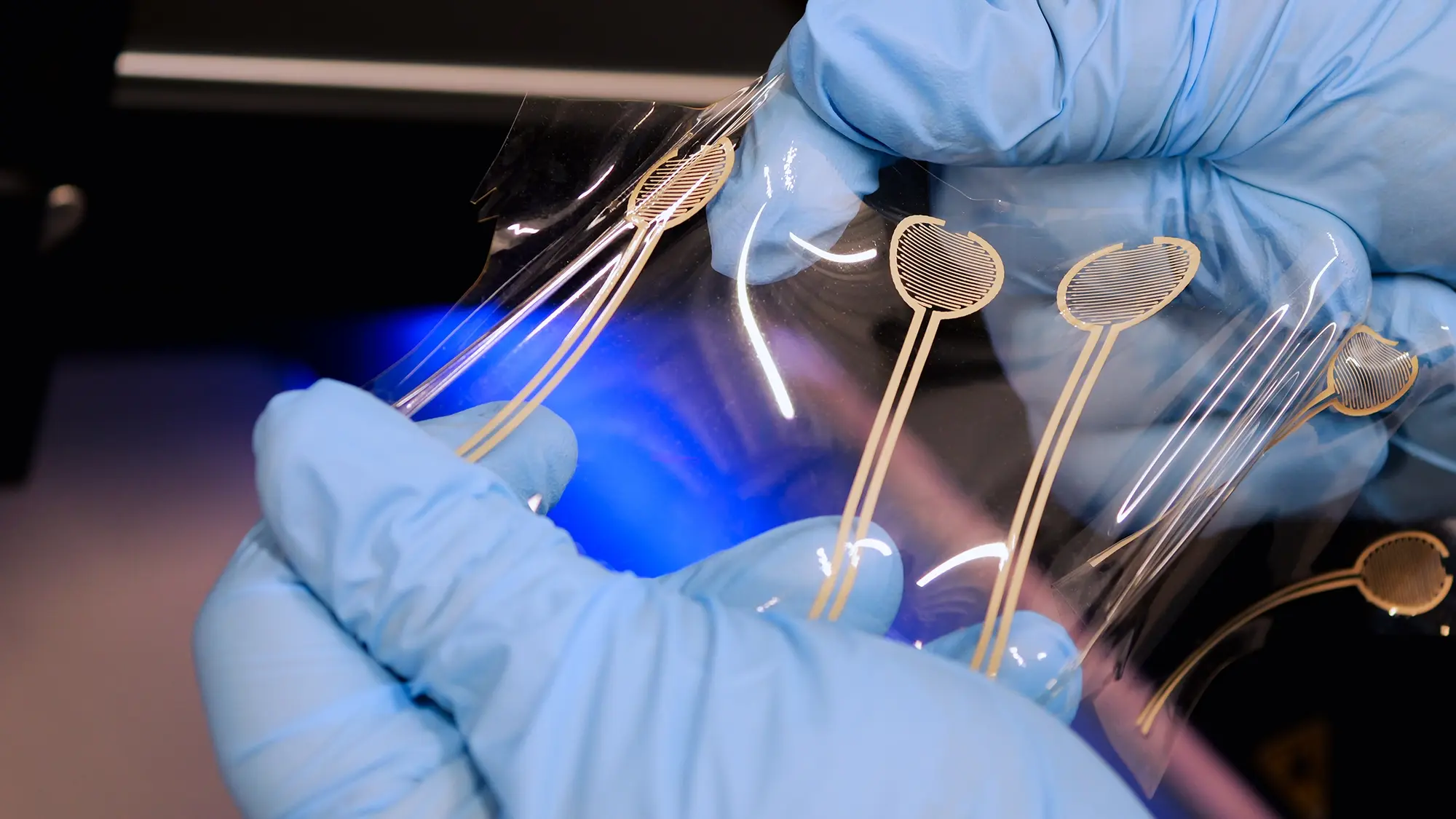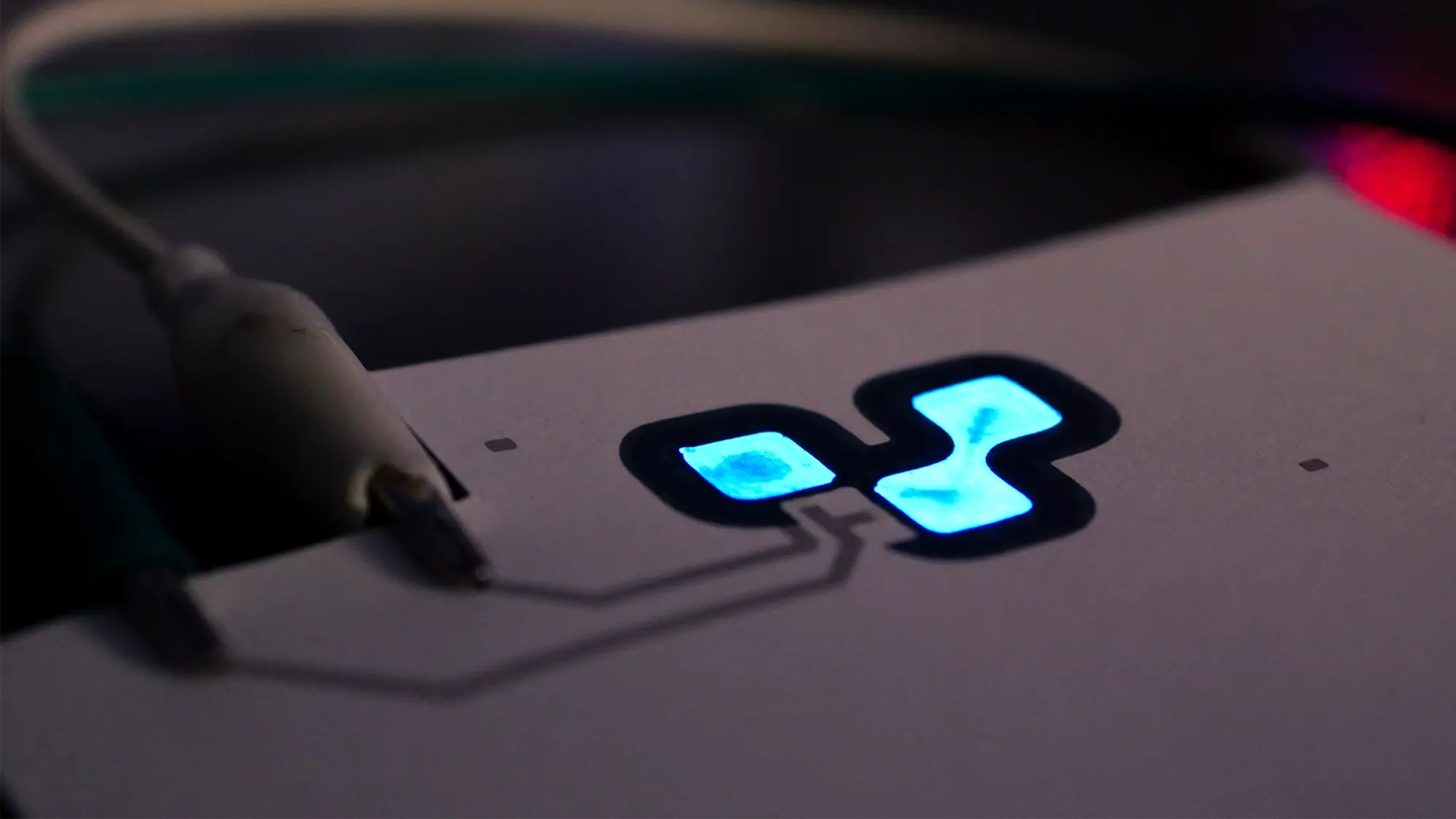Bringing Art to Life with Voltera’s V-One PCB Printer
INDUSTRY
Academia, Sensors, Sustainability
APPLICATION
Additive PCB Prototyping
PRODUCT
V-One
Highlights
The team at Living Architecture Systems Group is striving to bring the discipline of architecture to life. While challenges around the integration of electronics into structural systems are common, they find inspiration in the interconnectedness of nature, creating a novel approach that blends practical craftsmanship with technological innovation.
V-One: Becoming one with nature
When Philip Beesley, Professor of Architecture at the University of Waterloo, and Director of Living Architecture Systems Group began conceptualizing this project, he found many parallels in nature.
“How on earth could we make something which is artificial into something which we could associate with the world of nature, in the world of life?”- Philip Beesley, Professor of Architecture at the University of Waterloo, and Director of Living Architecture Systems Group
He began to look at the project in the same manner that nature works in wetlands, or the way deep filaments of mycelium (mushrooms) intertwine as a root network underground. This out-of-the-box thinking resulted in requirements for integrating meticulous details into their circuit boards.


For many years, they made their own boards by designing them and sending them overseas to be printed. They have also worked with breadboards, as well as muriatic acid, garolite, and burning in traces.
Now, with V-One, they can quickly prototype, completing multiple design iterations in just one day. Gone are the days of outsourcing circuit board production, or resorting to makeshift solutions.
The team at Living Architecture Systems Group uses V-One to integrate sensors, electronics, physical architecture, artificial intelligence, chemistry, and psychological research into physical objects. The goal is a creation that is not only responsive, but also empathetic to human interaction.
“We are very interested in moving with increasing miniaturization into elements that can be directly integrated into mechanisms.”- Philip Beesley, Professor of Architecture at the University of Waterloo, and Director of Living Architecture Systems Group


“This ability to work with some custom making of boards, directly interwoven, this is a tremendously motivating space. It's been a dream.”- Philip Beesley, Professor of Architecture at the University of Waterloo, and Director of Living Architecture Systems Group
The V-One difference
Using V-One means their innovative concepts around strain relief and cable mounting can be explored.
Not only does V-One break boundaries by enabling the integration of electronics into designs, but it also means the team at Living Architecture Systems Group can prototype faster, saving them time, money, and material along the way.
Additional resources
- Learn more: Living Architecture Systems Group
- LinkedIn: Philip Beesley

Want to learn more about our printers?
Learn how a Voltera dispensing system can help you prototype faster, waste less material, and protect your intellectual property.
